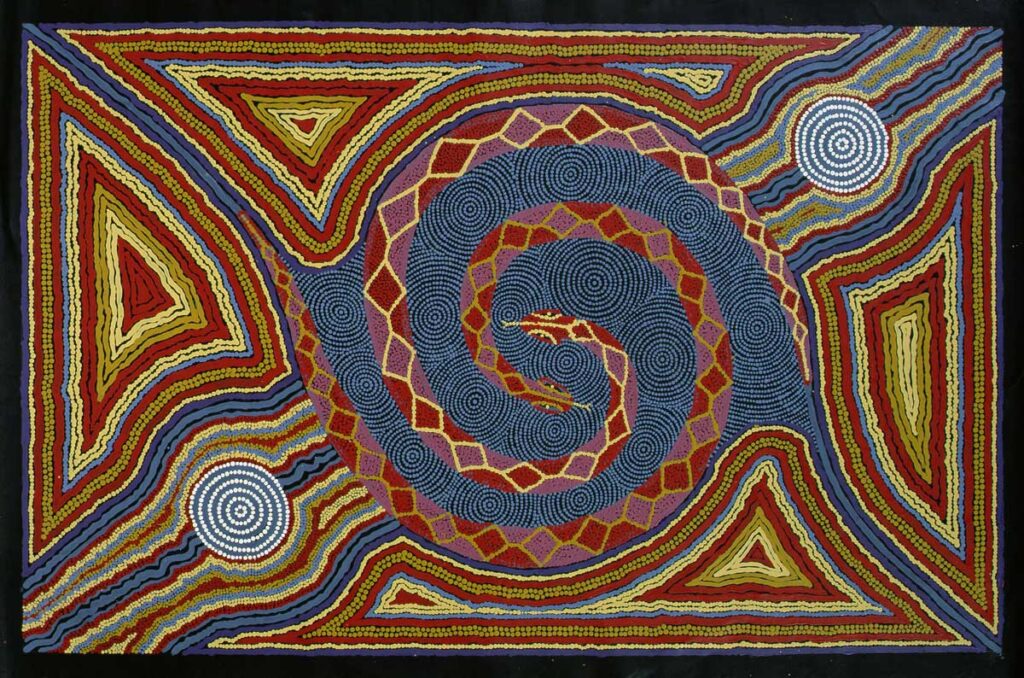[ad_1]
For Aboriginal Australians, Jukurrpa It is fundamental to how the world came into being. The term originated in the Warlpiri language, spoken in the vast desert landscape of the Northern Territory, but is now commonly used in many Aboriginal languages. The northern region has been inhabited by Aboriginal people for 50,000 years and analysis of rock engravings suggests that motifs still used in Aboriginal art are at least 12,000 years old.
Happening in ‘a different time, different from now’, Jukurrpa Describes how the ancients traversed the desert landscape, giving it features and creating life, before returning to Earth or exploding into the celestial constellations. Hills, rocks, rivers and watercourses became sacred sites, including Uluru and Mparntwe (Alice Springs). The resulting network of ‘Dreaming Tracks’ delineated the lands and boundaries and the responsibilities of the people within them.
Jukurpa is expressed through ceremonies, creation stories, group gatherings, and song. The motifs had to be completed quickly to try to capture the ethereal quality of the Jukurpa depicted in Aboriginal art. Curator Wally Caruana describes the extensive use of dots as ‘to indicate differences in topology and vegetation’ and ‘to invoke the presence of a supernatural force in the earth’.
The forced separation of Aboriginal children from their families and the annexation of traditional territories continued through most of the 20th century. Malcolm Maloney Jagamara (b.1955), an artist from Warlpiri country, was one of the Stolen Generation who was forcibly placed into foster care. He did not return to his native land until 1978. The traditional rights of the Jagamara allow them to portray Varna Jukurpa (Snake Dreaming). Shown here is the artwork vantapiri (1994), which can be translated as ‘Sun Snake’. Serpents, one of the primeval ancestors, traverse barren landscapes to form the rivers and watercourses that are essential to life.
[ad_2]




Comments are closed